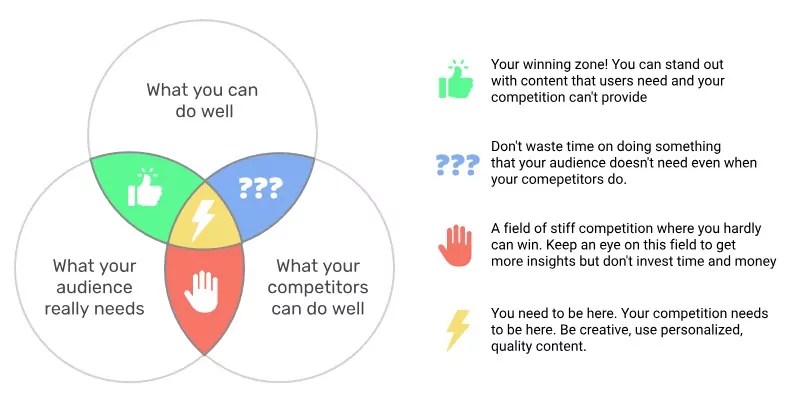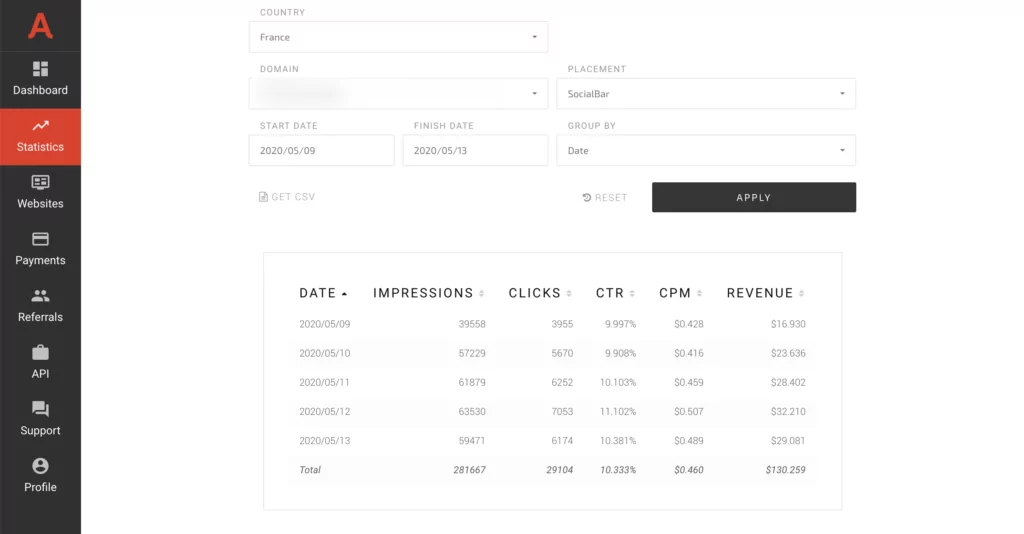Driving traffic to your web pages is a neat start, but the real question is how to get traffic that converts enough. Every publisher, blogger, and webmaster understands the need to get quality traffic that converts; conversion is key to better CPM rates. And every affiliate marketer who deals with landing pages and product recommendations puts CR above all. Yet, very few know the steps to take to channel the right audience to their website and get their users to take the needed actions.
You have probably learned the best ways to increase traffic, but the revenue generated still fails to match up to your efforts. That’s because the traction you are getting is not converting at all, or not converting the way it should.
In this post, we have put together some of the best practices and strategies to improve your approach and get quality traffic that converts. Let’s jump right in!
Contents
- The difference between quality traffic that converts and cheap traffic
- Why loads of visitors may not convert well
- How to improve your conversions: 7 proven means
- How to attract quality traffic that converts: top strategies
- Conclusion
The difference between quality traffic and cheap traffic
So let’s start by drawing the line between traffic and traffic that converts. It is important not to consider every tip on how to get free traffic.
Practices such as cloaking, using faux ads, or resorting to bot traffic will only earn you the numbers and nothing more! This is because users will soon realize as they get to your lander that you don’t have the value they need and will leave immediately. What you get is a high bounce rate.
On the other hand, getting quality traffic from well-targeted sources will earn you credibility, longer sessions, a solid ranking on search engines, and sometimes extra conversions!
Why loads of visitors may not convert well on a landing page
This part mostly concerns affiliate marketers and webmasters who work hard creating unique landers to drive traffic there. High traffic does not amount to high conversions, and here are some reasons why you get low conversions despite driving massive traffic to your site:
1. Your landing page doesn’t hook users
The easiest way to waste time, effort, and, probably, money is to direct your visitors to a busy or unfriendly landing page. Web users spend a few seconds deciding whether your website has the value they need or doesn’t. Suppose your landing page is too busy or looks messy with a combination of too many file formats (like audios and videos playing concurrently with banners all over the place). In that case, you will seem too salesy to your audience, and that’s a major turnoff.
The good rule of thumb is one goal. Your landing page should hook users with one unique selling point and guide them to one clear action. No extra information except from FAQs and testimonials.
Websites also should stay away from clutter with multiple buttons and pop-ups. If you’re using ad codes, it is better to switch off extra notifications, especially on mobiles.
2. No clear CTAs
Never assume that after reading your lander, your web visitors will be able to guess what you want them to do. No matter how obvious it appears, failure to use direct CTAs will cost you conversions.
Specify what action you want users to take and make it easy to spot. You could place it at strategic positions such as the top and bottom of the page, or along the sidebar.
Bloggers often suffer from the same curse. They Create wonderful, compelling content: tutorials, cheat sheets, reviews. But they run shy from engaging their audience to contribute to these efforts: donate, subscribe, read a sponsored post, download an ebook after watching some advertising content, etc. Don’t be too shy. You deserve being rewarded
3. Misleading content
Misleading occurs when there is a disconnect between the keywords you use for SEO or paid ads and the content on your lander. While this could be an intentional tactic to mislead the public to a site, most publishers and affiliate marketers unknowingly find themselves in the mix.
If your landing page contains content unrelated to what brought the visitors to your web page, they’re likely to leave almost immediately.
Another type of misleading is common among affiliate marketers who design eye-catching creatives and CTAs but fail to win conversions on the lander. And mainly because the creatives state something that landing doesn’t.
Compare these two CTAs. If it is a sweepstakes ad, the first message is all but certain a mislead.
You won iPhone! Get it now!
iPhone Giveaway! Wanna join?
4. Insufficient information, no benefits listed
Another common reason why a site fails to convert leads to customers is that it harbors little or no benefits. When users come to your web page via organic search or paid ads, they come for valuable information. Leaving them without key benefits is the way to lose conversions.
What is a benefit? This is not a product feature, not your brand, and not the description of how to use a product.
What users value is when their problems are solved. State how the product you promote solve their problems, and you will see users willing to buy it or subscribe to it (if it is a newsletter, for instance).
Let’s examine a tiny example.
| FEATURE | BENEFIT |
| Our ultra-sensitive SNC-VB770 sensor captures crisply, detailed pictures even at night time and with poor lighting. | Embrace the night palette and forget about noisy, smudged shots! Capture each glimpse of the sunset, stars, firecrackers, and Christmas lights! Create like a pro! |
How to improve your conversions: 7 proven means
So having identified some of the reasons your website or landing page traffic converts poorly convert, shall we reveal the best ideas for getting more conversions from your web traffic?
1. Identify your Unique Selling Point
Your USP (or unique selling point) is the sole feature of your business that stands you out from the crowd. Except you’re offering a product that has never been seen or known, you would most definitely have competitors. So, what is that thing about your product/service, brand, business, or customer service that makes you the customer’s preference?
Once you identify that, make it known to your audience and make it bold. In every ad copy and lander you create, let your USP be pronounced so your potential customers can never be mistaken on what extra benefit they stand to get by converting.

2. “Spy” on your website visitors
Schedule a couple of days to track what users do on your website. Do you know your audience well enough? Are you aware of what they do when they arrive on your website? Do you know which sections they visit? Which particular page draws the most attention and which ones prevent them from taking action?
Web analytics tools do a good job of offering much data about your customer’s activities on your website, how long they spend on your website, and how many sessions they produce, how fast they leave pages after landing on them (bounce rates). However, tools such as heatmaps and scroll maps are your best shot for getting a detailed understanding of your customers’ navigation on your website.
They show you which pages drive the most traffic as well as the general scrolling behavior of your clients. Equipped with such information, you will realize which pages turn away customers and the ones that could be optimized.
Content drill-down reports will uncover what the top pages from which users start reading your website are. Behavior flow reports reveal how engaging your content is. They show which pages don’t lead to any further content consumption and which ones are the website’s backbone.

3. Figure out where your current converting traffic is coming from
Ok, you found out who your users are and how they surf your website (their patterns).
However, you stand a minimal chance of getting quality traffic that converts if you do not understand the actual source(s).
You need to know what category of persons are engaged by the ads you show, their GEOs, preferred time and day of the week, the season of purchase, etc.
4. Choose trusted ad networks that provide means to measure the quality of your traffic and check how it converts
Reliable, safe, and experienced ad networks always provide you with in-depth information about how your traffic really performs. Statistics dashboards check not only the volume of impressions but how many times users clicked on ads you placed, which CTR you gained, etc.

By monitoring these stats you can assume which type of traffic converts better and which type of traffic advertisers are ready to pay for.
If you drive traffic from multiple GEOs, you can ask your account manager which countries most advertisers are looking for. Seize the moment! If you can supply the traffic — no matter its origin — it becomes quality traffic that converts massively!
5. Use simple web copies
Longreads are not bad when you shape them in an elegant story. A neat structure makes 50% of success.
1. Use heading and subheadings with keywords related to search queries.
2. Avoid long paragraphs (over 250-300 words). Try breaking these into two pieces with subheadings.
3. Use transitive words to help readers follow your thoughts.
4. Summarize the content and create helpful checklists based on your articles.
The content on your web page could be your biggest undoing if not well properly. Avoid using wordy or lengthy copies because web users have a short attention span. Be careful not to sound too salesy but keep your copies relevant, informative and friendly, with clear call-to-actions.
6. Use A/B testing to determine the problem areas
A/B testing involves experimenting with different ideas and strategies. A/B tests help you verify the productivity of a certain strategy, method or decision, and which points of your conversion funnel need an adjustment or a complete overhaul.
Test one hypothesis at a time, like, for instance, the place where you put banner ads. Change the sidebar position or choose a larger banner size. Wait a couple of days and check how your audience reacts. Probably, conversions dropped earlier because your visitors got used to the same ad positions.
The more ad codes you put on the website, the more you’ll get paid. Don’t trust ad networks that tell you this! Ad oversaturation is a troublesome issue. Too many ads do nothing but distract visitors. Even quality traffic that usually converts well may stop sending you clicks and conversions.
A winning strategy is combining various types of ads without annoying users.
How to attract the right audience that will convert: top strategies
Do not waste your ad budget! Getting the right traffic that converts is more important for business than getting just any traffic. Here are helpful tips to help you get quality traffic that converts:
- Focus on SEO-driven and informative content
- Create copies that suit your web purposes: informative copies for an informational-intent audience and commercial copies for commercial-intent visitors
- Use a reputable ad network
- Share your content on relevant social media platforms, pages, and groups
- Identify the pain points of your audience
- Do competitive research to know the strengths and weaknesses of your competitors, developing viable ideas along the way
- Publish more listicles or list posts; they help boost search ranking
- Join forums to encourage discussion of your products or services
- Write guest posts on other websites and platforms
- Blend lead generation with conversion rate optimization
- Using data from web analytics tools and heatmaps, retarget your ads to first-time viewers who left without converting
Conclusion
Getting traffic is great! But if your ad goal is not just to amass the numbers, you need to start getting quality traffic that converts and drives you better CPMs and CTRs.




0 Comments